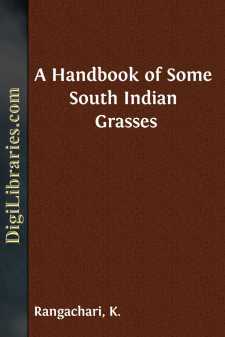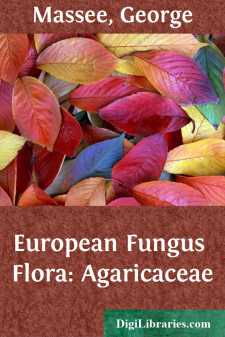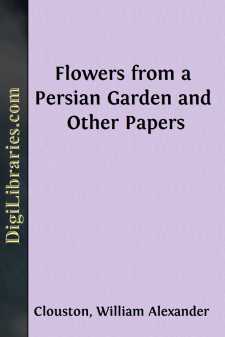Categories
- Antiques & Collectibles 13
- Architecture 36
- Art 48
- Bibles 22
- Biography & Autobiography 813
- Body, Mind & Spirit 142
- Business & Economics 28
- Children's Books 15
- Children's Fiction 12
- Computers 4
- Cooking 94
- Crafts & Hobbies 4
- Drama 346
- Education 46
- Family & Relationships 57
- Fiction 11828
- Games 19
- Gardening 17
- Health & Fitness 34
- History 1377
- House & Home 1
- Humor 147
- Juvenile Fiction 1873
- Juvenile Nonfiction 202
- Language Arts & Disciplines 88
- Law 16
- Literary Collections 686
- Literary Criticism 179
- Mathematics 13
- Medical 41
- Music 40
- Nature 179
- Non-Classifiable 1768
- Performing Arts 7
- Periodicals 1453
- Philosophy 64
- Photography 2
- Poetry 896
- Political Science 203
- Psychology 42
- Reference 154
- Religion 513
- Science 126
- Self-Help 84
- Social Science 81
- Sports & Recreation 34
- Study Aids 3
- Technology & Engineering 59
- Transportation 23
- Travel 463
- True Crime 29
A Handbook of Some South Indian Grasses
by: K. Rangachari
Categories:
Description:
Excerpt
CHAPTER I.
INTRODUCTION.
Grasses occupy wide tracts of land and they are evenly distributed in all parts of the world. They occur in every soil, in all kinds of situations and under all climatic conditions. In certain places grasses form a leading feature of the flora. As grasses do not like shade, they are not usually abundant within the forests either as regards the number of individuals, or of species. But in open places they do very well and sometimes whole tracts become grass-lands. Then a very great portion of the actual vegetation would consist of grasses.
On account of their almost universal distribution and their great economic value grasses are of great importance to man. And yet very few people appreciate the worth of grasses. Although several families of plants supply the wants of man, the grass family exceeds all the others in the amount and the value of its products. The grasses growing in pasture land and the cereals grown all over the world are of more value to man and his domestic animals than all the other plants taken together.
To the popular mind grasses are only herbaceous plants with narrow leaves such as the hariali, ginger grass and the kolakattai grass. But in the grass family or Gramineæ the cereals, sugarcane and bamboos are also included.
Grasses are rather interesting in that they are usually successful in occupying large tracts of land to the exclusion of other plants. If we take into consideration the number of individuals of any species of grass, they will be found to out-number those of any species of any other family. Even as regards the number of species this family ranks fifth, the first four places being occupied respectively by Compositæ, Leguminosæ, Orchideæ and Rubiaceæ.
As grasses form an exceedingly natural family it is very difficult for beginners to readily distinguish them from one another.
The leaves and branches of grasses are very much alike and the flowers are so small that they are liable to be passed by unnoticed. The recognition of even our common grasses is quite a task for a botanist.
To understand the general structure of grasses and to become familiar with them it is necessary to study closely some common grasses. We shall begin our study by selecting as a type one of the species of the genus Panicum.
Panicum javanicum is an annual herb with stems radiating in all directions from a centre. The plant is fixed to the soil by a tuft of fibrous roots all springing from the bases of the stems. In addition to this crown of fibrous roots, there may be roots at the nodes of some of the prostrate branches. The stems and branches are short at first, and leaves arise on them one after the other in rapid succession. After the appearance of a fair number of leaves the stem elongates gradually and it finally ends in an inflorescence.
Fig. 1.—Panicum javanicum. (Full plant.)
The stem consists of nodes and internodes. The internodes are cylindrical and somewhat flattened on the side towards the axillary bud. When young they are completely covered by the leaves and the older ones have only their lower portions covered by the leaf-sheaths. Usually they complete their growth in length very soon, but the lower portion of the internode, just above the node and enclosed by the sheath, retains its power of growth for some time.
The leaf consists of the two parts, the leaf-sheath and the leaf-blade. At the junction of these two parts there is a very thin narrow membrane with fine hairs on its free margin. This is called the ligule. (See fig. 2.)
The leaf-sheath is attached at its base to the node and it is slightly swollen just above the place of insertion. It covers the internode, one margin being inside and the other outside. The surface of the sheath is sparsely covered with long hairs springing from small tubercles. The outer margin of the sheath bears fine hairs all along its length. (See fig. 2.)
The leaf-blade is broadly lanceolate, with a tip finely drawn out. Its base is rounded and the margin wavy, especially so towards the base. On the margin towards the base long hairs are seen, and some of these arise from small tubercles. The margin has a hyaline border which is very minutely serrate. There is a distinct midrib and, on holding the leaf against the light, four or five small veins come in to view. In the spaces between these veins lie many fine veins. All the veins run parallel from the base to the apex. At the base of the blade the veins get into the leaf-sheath and therefore the sheath becomes striated. Just above the ligule and at the base of the leaf-blade there is a colourless narrow zone. This is called the collar.
Fig. 2.—Leaf of Panicum javanicum.
A. Full leaf; B. a portion of the leaf showing 1. the ligule and 2. the collar.
As already stated the inflorescences appear at the free ends of branches. Every branch sooner or later terminates in an inflorescence which is a compound raceme. There are usually five or six racemes in the inflorescence. Each raceme has an axis, called the rachis, which bears unilaterally two rows of bud-like bodies. These bud-like bodies are the units of the inflorescence and they are called spikelets. (See fig. 3.)
Fig. 3.—The inflorescence of Panicum javanicum.
1. Inflorescence; 2 and 3. the front and the back view of a raceme.
The spikelets are softly hairy and are shortly stalked. The pedicels of spikelets are hairy and sometimes one or two long hairs are also found on them....





